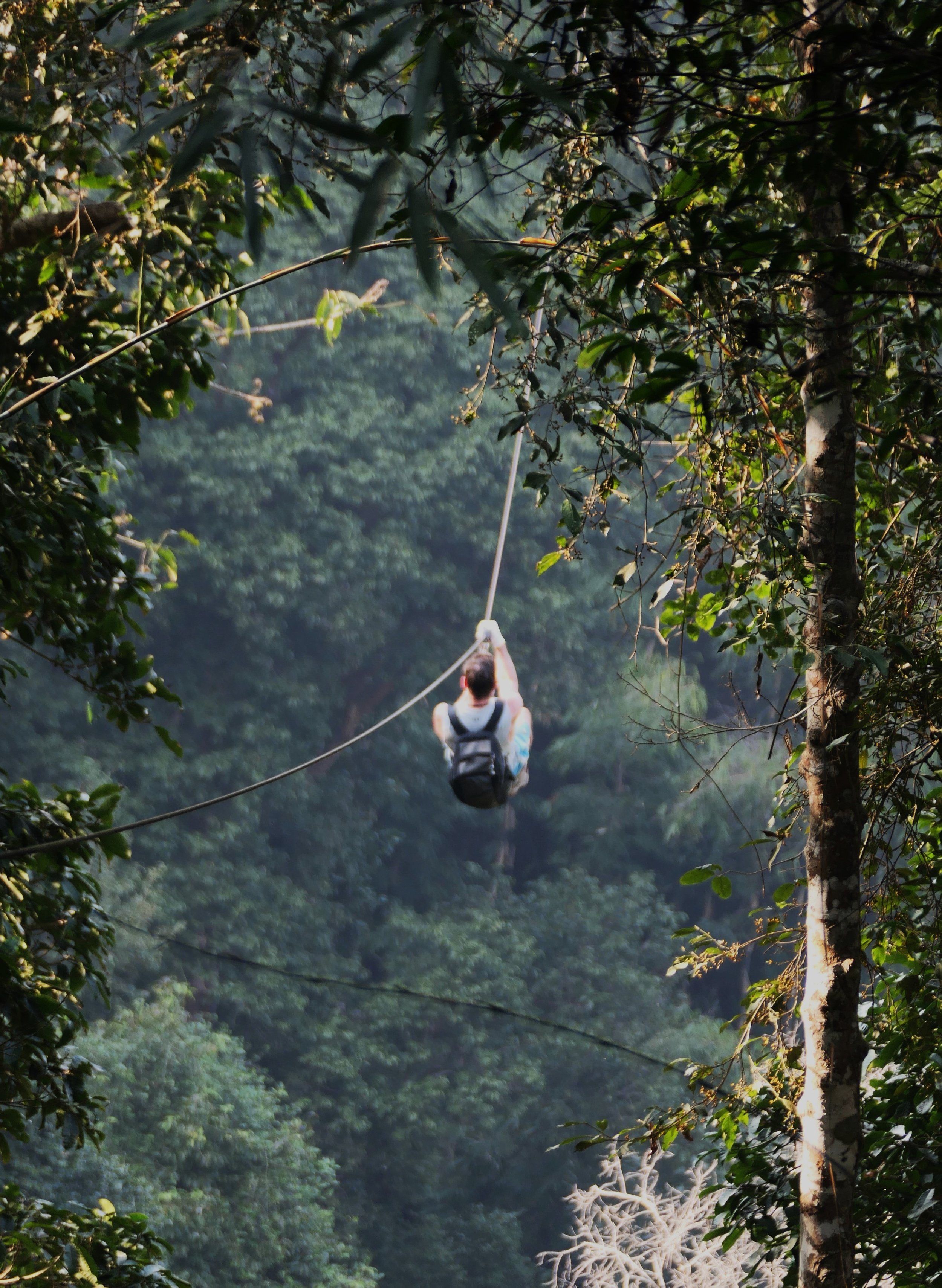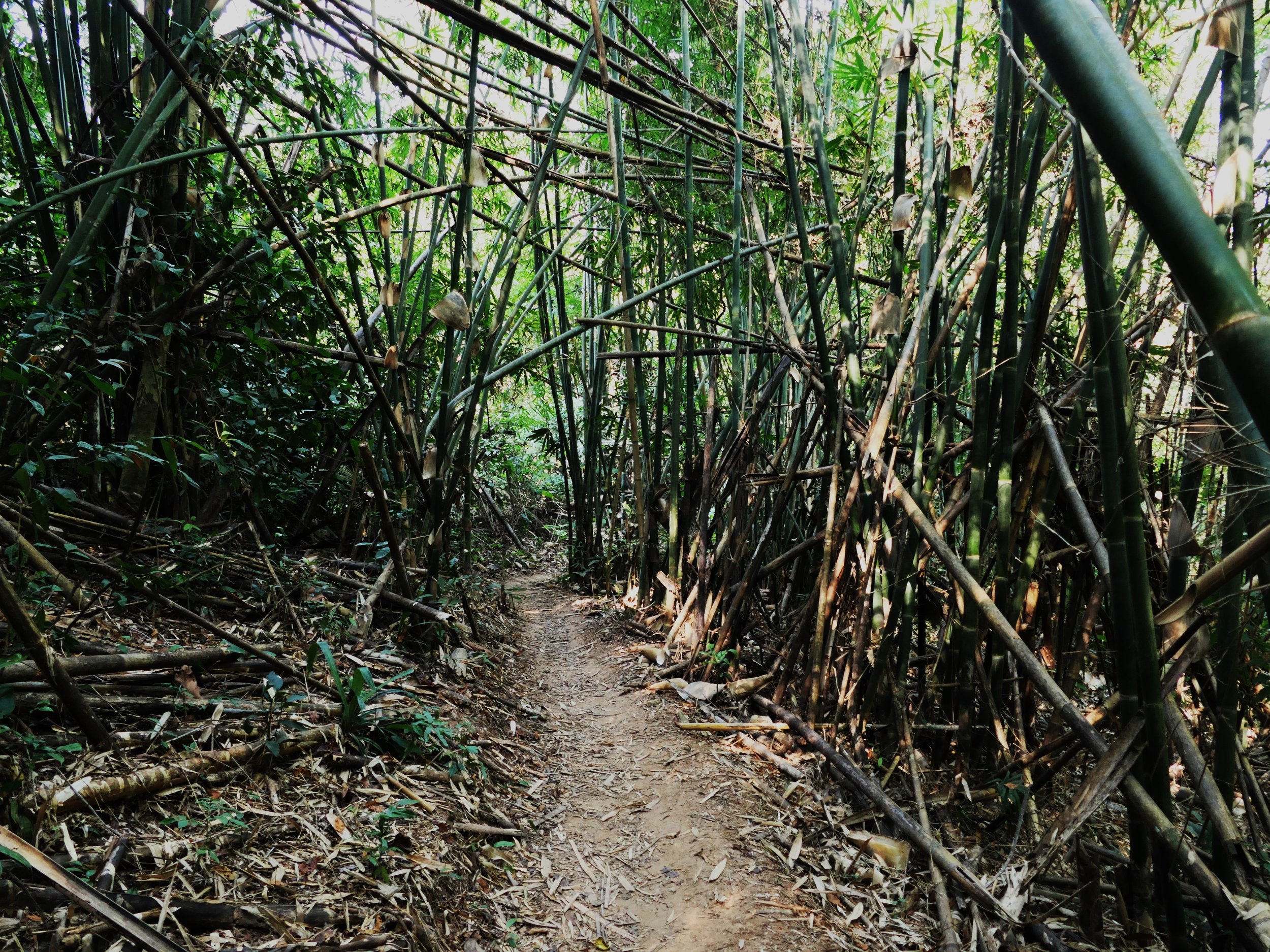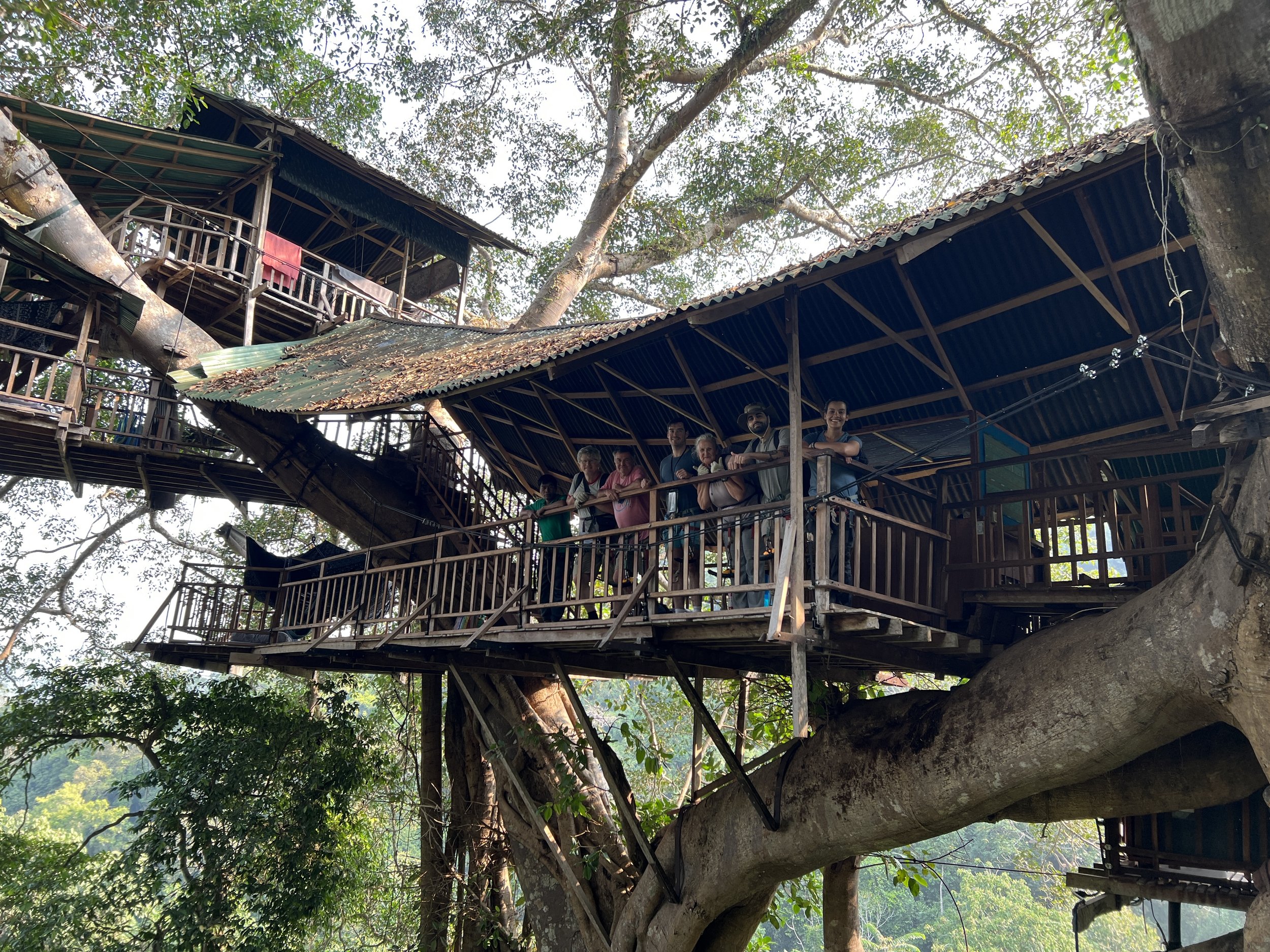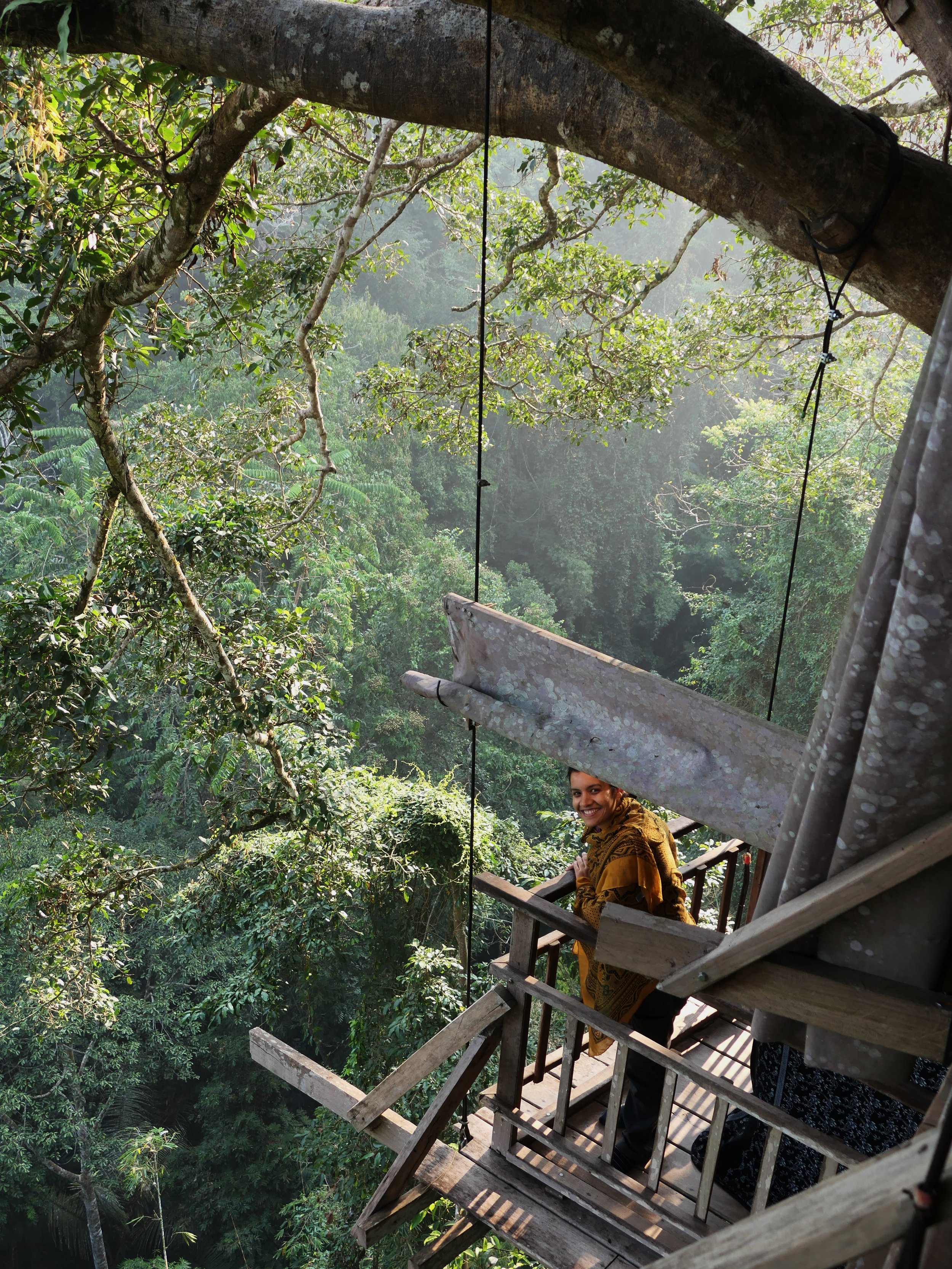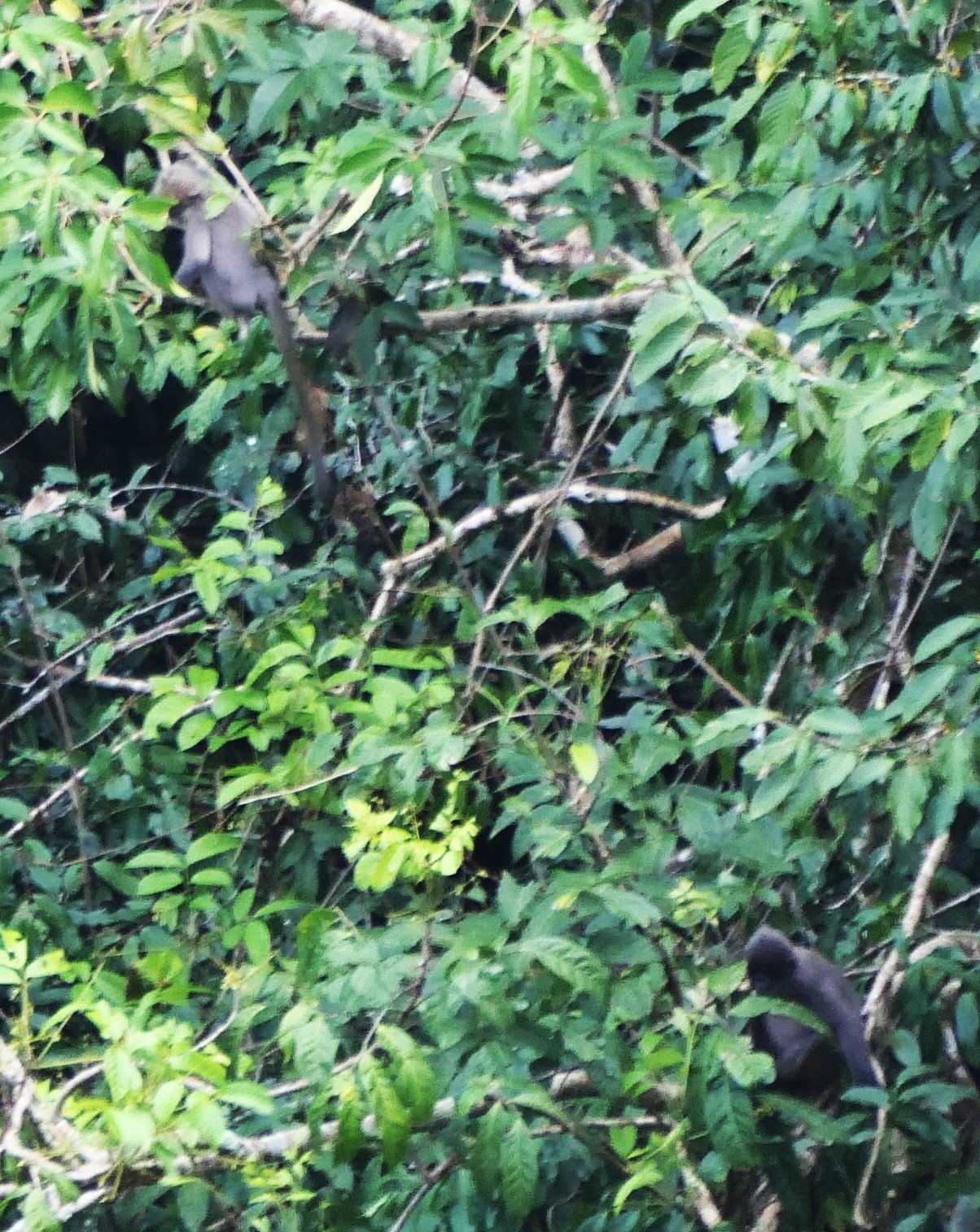
Huay Xai, the enchanting Gibbon Experience, and the 2-day Mekong Slow Boat
The town of Huay Xai is on the Mekong in northwestern Laos, directly opposite Chaing Khong in far-northern Thailand. Visa on Arrival and E-visa can both be used at the Huay Xai border crossing. There is nothing to see in the town. People come here for one of four reasons:
They booked months ahead and got a place on the wonderful Gibbon Experience (www.gibbonexperience.org) — three days and two nights ziplining through glorious old-growth jungle and sleeping in a treehouse far above the jungle floor. The tour leaves from Gibbon’s office right in Huay Xai town centre. (Note that the 2-day Gibbon Express is NOT in the wilderness area — you’ll do lots of ziplining and sleep in a treehouse, but wildlife sightings are extremely rare.)
They just arrived from Thailand or Luang Prabang and they will take the bus to Luang Namtha the next morning, to trek amongst the hill tribes (the best place to trek in Laos) and/or continue on to Nong Khiaw for stunning karst scenery (which I highly recommend.)
They just arrived from Thailand and they are planning to travel by river to Luang Prabang via (a) the 2-day Slow Boat, (b) one of the more expensive but also more comfortable 2-day cruises with either Shompoo or Nagi of Mekong, (c) the 8-hour speedboat, or (d) the express bus to Natuey and then the train.
They have been travelling in northern Laos and they are about to cross into northern Thailand
Note: If you are coming into Laos from Thailand, you should cross the border at Huay Xai into Laos the night BEFORE you start any activities in Laos! The Gibbon Experience, the boat to Luang Prabang, and the bus to Luang Namtha all leave EARLY from Huay Xai. And sometimes the border crossing gets very slow. If you stay in Thailand the night before, and arrive at the border post when it opens, you risk missing any or all of these activities. I know two people who wasted €330 each on the Gibbon Experience because they made that mistake.
Buses depart from Chiang Rai every 30 minutes headed to Chiang Khong on the border — no need to book in advance. The drive takes 90 minutes. Tell the driver you would like to go to the Lao border, and they will drop you off at the right place before you enter Chiang Khong town. Tuk-tuks will be waiting to take you to the border — the cost as of February 2024 is 50 baht, which you usually pay while still on the bus from Chiang Rai, not to the tuk-tuk driver directly. At the border you will need 25 baht in cash for the bus that crosses the river between the Thai and Lao border posts. After you enter Laos, there will be tuk-tuks waiting outside to bring you to Huay Xai town centre— typical cost around 70,000 Lao kip, but they’ll take baht, too. Get kip from BCEL ATM machines, either at the border or in town.
Arriving in Huay Xai on the Slow Boat from Luang Prabang, en route to northern Thailand: The slow boat arrives in Huay Xai at 18:00 and the border post is open until 20:00. Tuk-tuks will be waiting at the boat dock to take you straight there, so you don’t need to stay overnight in Huay Xai if you don’t want to. Note: When you pay the tuk-tuk driver (using Lao kip) to take you to the border, the price will seem high, but then he’ll give you a partial refund in Thai baht. This is to pay for the bus across the Mekong in between the Lao and Thai border posts, because that border bus does not accept Lao kip. You may think ”oh, but I already have Thai baht, I don’t need that. Just sell me a cheaper ticket and don’t give me any baht”. Don’t try to argue – the tuk-tuk driver doesn’t speak English and this is how it works.
The Gibbon Experience
If you were lucky enough to get a place on the 3-day Gibbon Experience (www.gibbonexperience.org), you’re in for a treat — ziplining through old-growth jungle surrounded by the wonderful sound of jungle animals. If it’s sold out, you may well find availability on the 2-day Gibbon Express, but that’s not in the National Protected Area and you have very little chance of seeing Gibbons or other jungle wildlife. You’ll still have two days of awesome ziplining in the treetops with great food and fun guides, though. So if your priority is ziplining and you’re not interested in wildlife, the Gibbon Express may be the right choice. For me personally, the wildlife was a huge part of it, and I wouldn’t trade the 3-day Experience for the 2-day Express under any circumstances.
On the 3-day Gibbon Experience, you will hear the sounds of the jungle as you fall asleep in the treehouse each night, and you have a good chance of spotting Gibbons or Langur Monkeys.
On either the Gibbon Experience or the Gibbon Express, you’ll leave your big backpack in the agency’s office in town and carry just your small daypack. Food, water and bedding are provided. The only electricity you’ll have is from any batteries you bring with you. You will need to zipline to your treehouse carrying all of your gear, so pack carefully. Wear sturdy hiking boots – even in the dry season, some trails are muddy. And bring DEET!!
If you’re tired of trekking in burning sunshine through destroyed jungle, the cool shade of the old-growth jungle on the Gibbon Experience will be a nice change
Langur monkeys playing just across from our tree house
The next best thing to do in Huay Xai is to get a bus to Luang Namtha to trek amongst the hill tribes and then continue on to Nong Khiaw for stunning karst scenery. and a short boat ride to the idyllic roadless village of Muang Ngoi.
The Two-Day Mekong Slow Boat between Huay Xai and Luang Prabang
Another option from Huay Xai is the 2-day Mekong slow boat to Luang Prabang. You can do this on the cheaper, regular boat, or on one of three more expensive but more comfortable cruises with Shompoo, Nagi of Mekong, or Mekong Lover Cruise. Most people really enjoy this. But it’s not nearly as fun as the Gibbon Experience or trekking from Luang Namtha.
It’s usually a relaxing experience, passing by a lot of villages and some really stunning rock formations. But almost all of the old-growth jungle along the river is destroyed, and 2 days of barren hillsides and brown leafless rubber plantations (rubber trees lose their leaves during the winter dry season starting in November) can get depressing. Travelling this route by bus is long and less comfortable than the boat, but I would take the bus if you have time to stop en route for 3 days in Luang Namtha (the best trekking in all of Laos) and/or a few days in Nong Khiaw and Muang Ngoi (for stunning karst cliffs and riverside scenery).
All information and tickets for the Shompoo Cruise can be found here, for Nagi of Mekong here, and for Mekong Lover Cruise here.
IF YOU THINK THAT ONE DAY ON THE BOAT WILL BE ENOUGH FOR YOU, YOU CAN ARRANGE THAT. Going both directions, the boat stops overnight in Pakbeng. From either Luang Prabang or Huay Xai, you can buy a one-day boat ticket just as far as Pakbeng, stay overnight there, and then take a bus to Muang Xay (also called Oudomxay). From Oudomxay you can get a convenient bus or the train to almost anywhere in northern Laos.
Many people seem to think that the boat goes from Luang Prabang all the way to Chiang Mai or Chiang Rai in Thailand. It doesn’t. All of these boats travel only WITHIN Laos, between Huay Xay and Luang Prabang. NONE of them EVER stop in Thailand anywhere. There IS NO boat between Laos and Thailand for foreigners. None. For directions by bus and tuk-tuk between Chiang Rai and Huay Xay, scroll up to the top of this page.
Is the extra comfort and convenience of Shompoo, Nagi or Mekong Lover worth the extra cost compared to the Slow Boat? That depends on two things:
Going downstream (Huay Xay to Luang Prabang) is the much more popular way, and the regular Slow Boats are often badly overcrowded going downstream. But the boats going upstream (Luang Prabang to Huay Xay) are usually comfortably empty even in peak season. So the extra comfort of Shompoo or Nagi is a bigger selling point when travelling downstream.
Your budget. If you’re staying in hostel dorm rooms, you’ll probably book the cheaper, regular slow boat. If you’re staying in 3-star hotels, you’ll probably book Shompoo, Nagi or Mekong Lover. If you’re staying in budget guesthouses, you might go either way.
Tickets for the less expensive, less comfortable, regular Slow Boat can be bought at almost any hotel, guesthouse or travel agent in Huay Xai, Pakbeng or Luang Prabang, or right at the boat dock (an easy walk from the town centre in Huay Xai, but a 25-minute drive in Luang Prabang). If you buy at the boat dock, where no one speaks English, be careful: is your ticket just for one day as far as Pakbeng, or for the whole 2-day trip? (You’ll be on a different boat on day 2 vs day 1). I paid 400,000 kip ($23) in January 2023 at my youth hostel — that included both days’ travel plus the long tuk-tuk trip from Luang Prabang to the boat dock. I may have overpaid by 50,000 kip, but the peace of mind from confirming in English that I had bought a complete ticket was worth it.
On the boat you can buy water, coca-cola, Beer Lao and pot noodle. If you want anything else to eat or drink, bring it with you.
Some of the Slow Boats are quite comfortable, with beautiful wood panelling. On others, the seats are old car seats ripped out of junked minivans, and the seats are not bolted to the floor, they’re just thrown in all together with very little leg room.
In both directions, all of these boats stop overnight at Pakbeng. On arrival, you’ll have to haul your luggage from the boat landing up a steep concrete staircase to the parking lot. One staircase (on the left-hand side as you look uphill) goes all the way up – try to use that one if you can. The staircase on the right is too short, it ends in a sand dune several feet below the top of the hill. You then have to crawl uphill through the sand, taking care not to fall backward down the slope. I saw people doing this with wheelie suitcases, which is nuts – bring backpacks.
Once up in the parking lot, everything is very efficient. Vans will be waiting to take you for free up the steep mountain roads to your guesthouse — either to the one that you pre-booked on the web, or guesthouse owners will be fighting for your business when you get there. Within 30 minutes you’ll be checked in, you’ll have chosen your breakfast and bag lunch for the next day, and you’ll be on your way to find dinner at one of several restaurants. In the morning, your innkeeper will wake you up, feed you, and put you and your backpack in a van to the boat dock in plenty of time to board the boat.
How to travel between Huay Xay and Luang Prabang in a single day:
One option is the very fast, very loud, small Mekong speedboats, which go between Luang Namtha and Huay Xay in about 8 hours. This is not an option for photographers, because you have to sit completely still for hours on end for safety. And if your pilot hits a rock or sandbar (unlikely, but possible), you’ll likely be badly hurt with no access to health care. I wouldn’t do it, but many people with a need for speed absolutely love these boats.
Another option is the 16-hour sleeper bus costing 500,000 kip. It departs Huay Xai at 17:30, arrives in Pakmong at 6:30 AM (where you exit the bus if you want to go to Nong Khiaw and/or Muang Ngoi), and then arrives in Luang Prabang around 10 AM. There are 2 people to 1 bed, beds are short (around 1.7 metres) and they fill up the middle aisle with more people as well, so it gets quite crowded.
I think a better option is train + van. FROM Luang Prabang TO Huay Xay is really easy. First take the train to Na Toey (sometimes spelled “Nateuy”). Buy your train ticket 3 days in advance, either at the station or via your guesthouse in Luang Prabang. On arrival in Na Toey you’ll find comfortable express vans waiting at the train station to take you to Huay Xay in four hours, very fast by Lao standards. No need to book the bus in advance. (This bus also stops en route at Luang Namtha.)
For those going the other direction (from Huay Xay northbound), it’s more complicated. First, you need to buy your train ticket 3 days in advance because the train often sells out; but Huay Xay is 200 kilometres from the nearest train station. And you need the fast express van from Huay Xai to connect with the train — if you’re not careful, you could wind up on a slow local bus, and you’ll miss your train for sure. For info on booking the train see here.
The cheapest way to buy your van ticket is at the station directly — prices as at 8 December 2024 are shown in the attached picture which was very helpfully provided by fellow traveller Jan Doskočil. Add in 60,000 kip for the tuk-tuk from Huay Xai town centre to the bus station — book that in advance, because Huay Xay is completely asleep early in the morning, you might not find any tuk-tuk at the last minute.
If you book this from your hotel in Huay Xai town centre, the charge to Na Toey is usually about 350,000 kip, although you might negotiate that down to 300,000 — that’s 200,000 for the van ticket, 60,000 for the tuk tuk from your guesthouse to the bus station (pre-booked so you know it will be there), and the rest is commision for the guy who sells you the ticket. In my opinion, it’s worth $2-4 extra to know you have a tuk-tuk and a ticket on the right van.
The timings shown in the picture are misleading. The first express bus departs around 7 AM or whenever it fills up. More express vans depart as they fill up - no fixed time, no fixed number of vans. As soon as every seat is sold, the van leaves. The further forward you sit inside the van, the less bumpy it will be.
About 2-3 hours after leaving Huay Xay, the van stops at Luang Namtha airport. That airport has direct flights to Vientiane, and Luang Namtha town is the base for the best trekking in all of Laos, as well as bus connections to Oudomxay and Nong Khiaw.
From there the bus continues on to the train station in Natuey (also spelled Na Toey), total travel time around 4-5 hours on a very busy, bumpy road. The last bus departs Huay Xay at around 10 AM. The southbound trains depart Na Toey toward Luang Prabang and Vientiane at around 15:00 and 18:00. You must be at the train station 30 minutes before departure, which shouldn’t be a problem.
Information on how to book the train and the other activities mentioned is found here.

